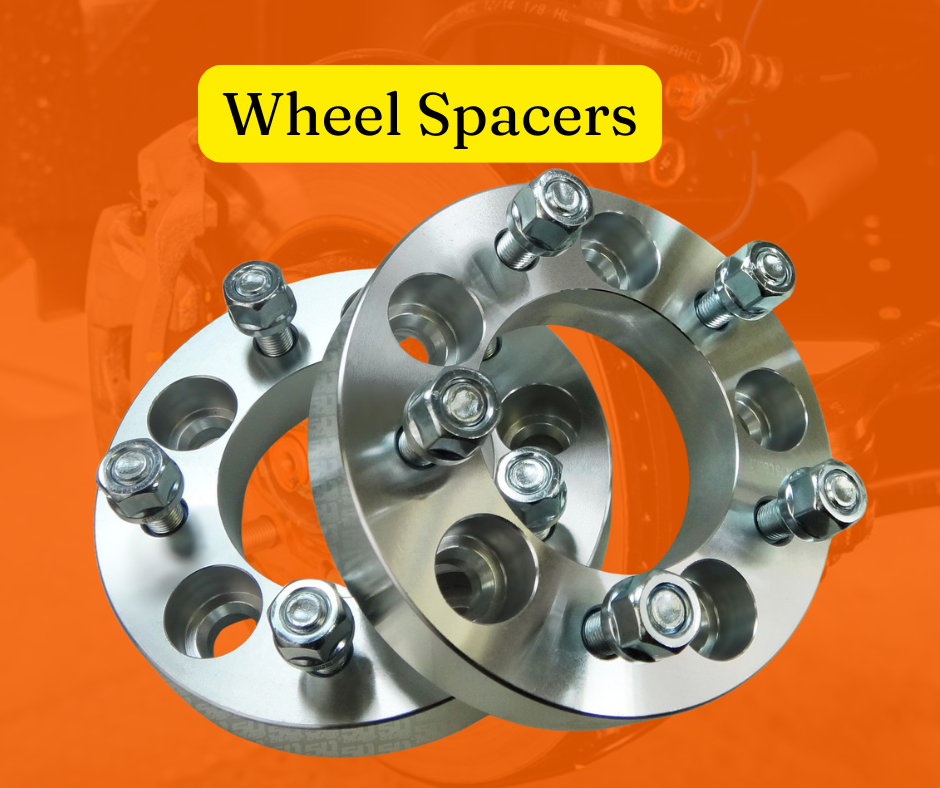Different Types of Wheel Spacers and Their Uses

Explore the world of wheel spacers and understand how they can enhance your vehicle's performance and aesthetics.
Understanding Wheel Spacers and Their Functionality
Wheel spacers are components that are installed between the wheel hub assembly and the wheel itself. Their primary function is to create additional space between the wheel and the hub. This added space can help in several ways, such as improving the vehicle's handling, allowing for the installation of larger brake calipers, and enhancing the overall stance and appearance of the vehicle.
By pushing the wheels further out from the hub, wheel spacers can also help in achieving a wider track, which can contribute to better stability and cornering performance. They are particularly popular among car enthusiasts who want to customize their vehicles for both aesthetic and performance improvements.
Exploring the Various Materials Used in Wheel Spacer Production
Wheel spacers can be made from a variety of materials, each offering different benefits. The most common materials used in wheel spacer production are aluminum and steel. Aluminum spacers are lightweight and corrosion-resistant, making them a popular choice for performance-oriented applications. They are also easier to handle during installation.
Steel spacers, on the other hand, are heavier but offer greater strength and durability. They are often used in heavy-duty applications where additional strength is required. Some wheel spacers are also made from composite materials, which can offer a balance between weight and strength. When choosing a material, it's important to consider the specific requirements of your vehicle and driving style.
Types of Wheel Spacers: Bolt-On vs. Slip-On
There are two main types of wheel spacers: bolt-on and slip-on. Bolt-on spacers are attached to the existing wheel hub using the vehicle's lug nuts, and then the wheel is mounted onto the spacer using a separate set of lug nuts. This type of spacer offers a more secure fit and is typically used for larger spacing requirements.
Slip-on spacers, on the other hand, are simply placed between the wheel and the hub without additional fasteners. They are easier to install but are generally used for smaller spacing needs. While slip-on spacers are convenient, they may not provide the same level of security as bolt-on spacers, especially for high-performance driving applications.
Key Benefits of Installing Wheel Spacers on Your Vehicle
Installing wheel spacers can offer several benefits, including improved handling and stability. By widening the track of the vehicle, spacers can enhance cornering performance and reduce body roll. This can be particularly beneficial for performance-oriented vehicles or those used in motorsports.
Additionally, wheel spacers can provide the necessary clearance for larger brake calipers or custom wheels that may not fit within the stock wheel wells. They can also help achieve a more aggressive stance, giving the vehicle a more customized and aesthetically pleasing appearance. Overall, wheel spacers are a versatile modification that can enhance both the look and performance of your vehicle.
Considerations and Safety Tips When Choosing Wheel Spacers
When choosing wheel spacers, it's important to consider several factors to ensure safety and compatibility. First, make sure the spacers are the correct size and thickness for your specific vehicle and wheel setup. Using spacers that are too thick can cause excessive stress on the wheel studs and potentially lead to failure.
It's also crucial to choose high-quality spacers made from reliable materials. Low-quality spacers can compromise safety and performance. Always follow the manufacturer's installation instructions and torque specifications to ensure a secure fit. Regularly inspect the spacers and lug nuts for any signs of wear or loosening, especially if you frequently drive in demanding conditions.

 Loading..
Loading..